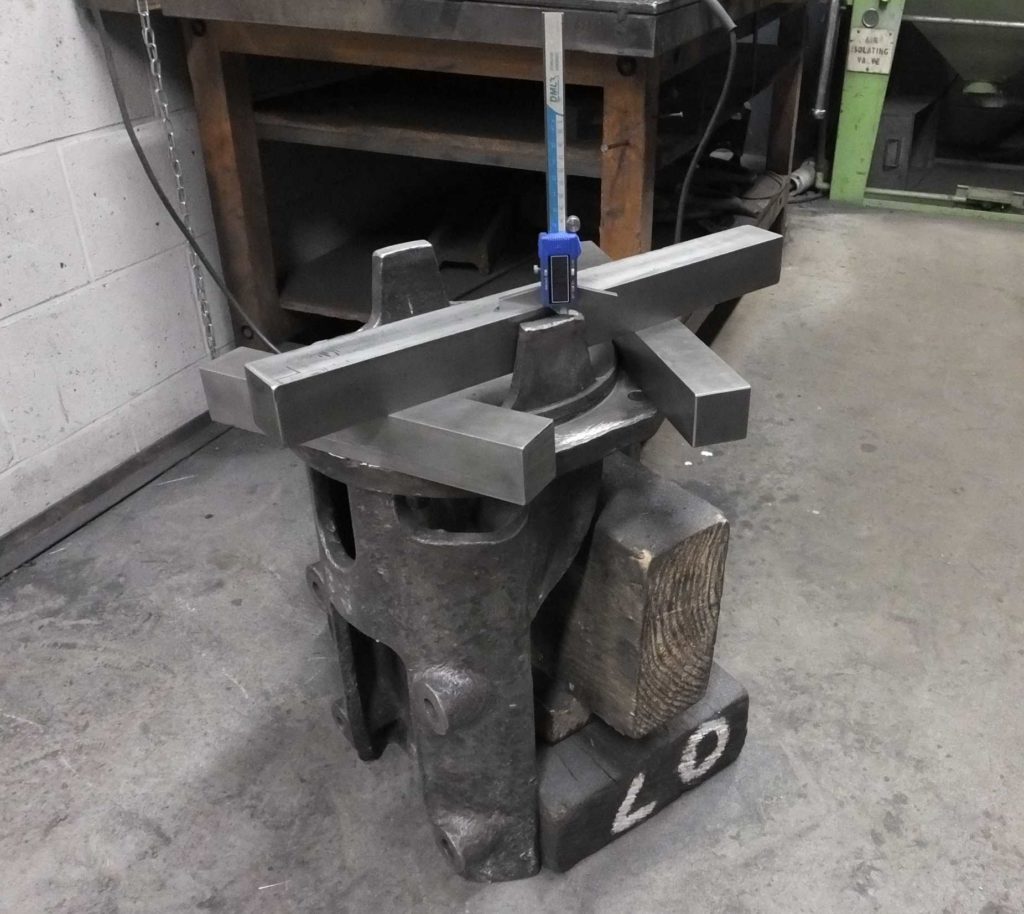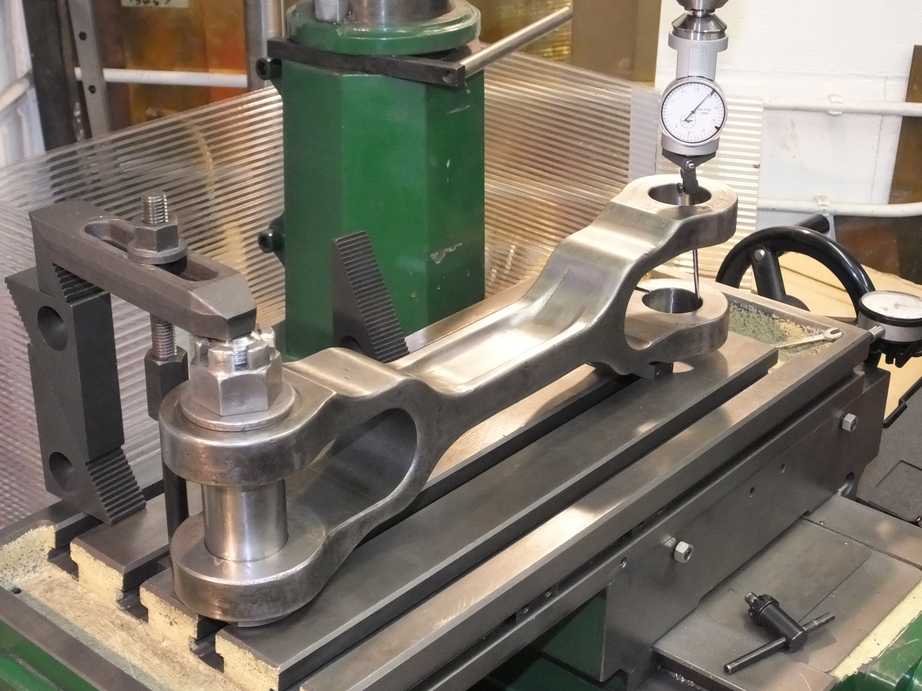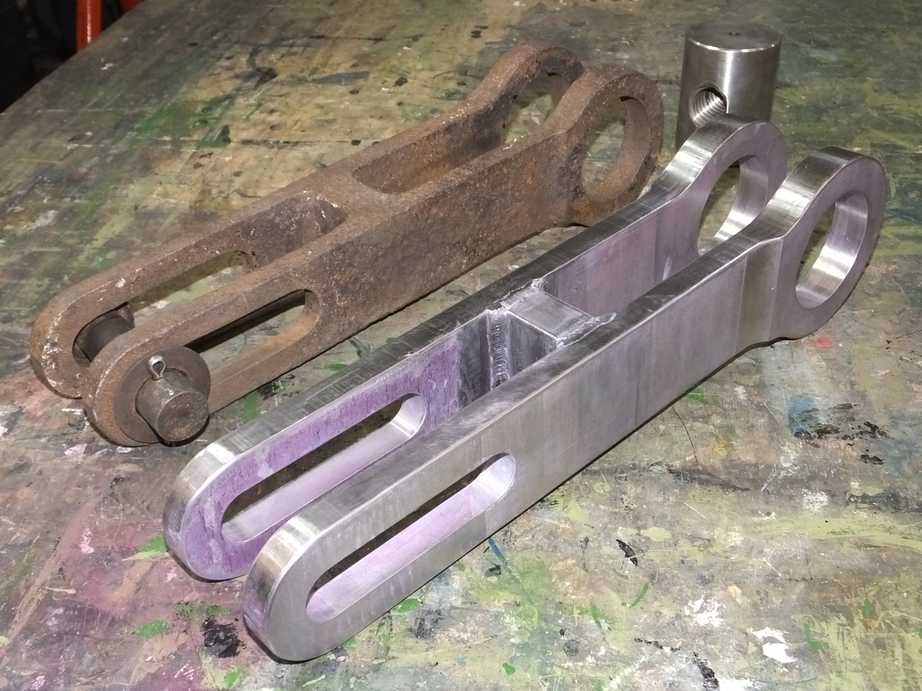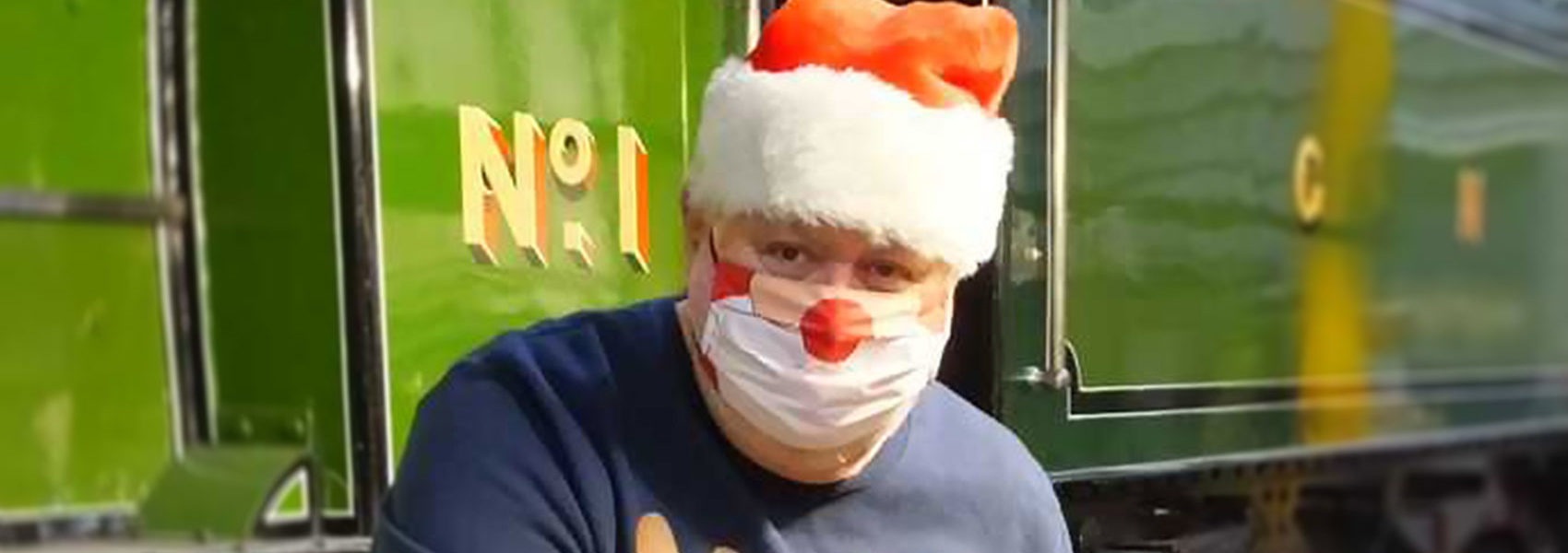Weeks commencing 30 November and 7, 14 and 21 December 2020
The coach has been moved from storage to contractors’ premises for the recommencement of its overhaul. The contractors wasted no time and within a week the overhauled voltage regulator and dynamo had been refitted. The auxiliary air tank has been removed and will be sent for contractor overhaul. The vacuum brake cylinders have also been overhauled and refitted. The buckeye couplings have been removed for overhaul and test.

A week after arrival, the coach was also surveyed for the preparation of the design for the Controlled Emission Toilet (CET) installation. Our coach is unusual in having the early pattern bogies and uncompensated braking, which means we have underslung brake pull rods and the tank will have to accommodate the location of the rod that goes from the brake gear to the bogie. During the survey it was apparent the the ETH cabling will have to be re-routed to allow the fitting of the tank mounting brackets. We await the design proposal; meanwhile the ETH cable has been re-routed and the old toilet removed.
A week after the coach survey we again visited the coach to see it lifted and this allowed a thorough survey of the bogies and the bogie castings on the bottom of the coach. Things didn’t look half bad. There are a few jobs to attend to but these are mainly normal maintenance jobs like re-shimming horns and checking pins for wear. With the weight off the bogie the springs look very good with the leaves remaining tight together. The coach has now been put back on its bogies and moved outside while the contractors await our instructions to proceed to the next stage of the overhaul.
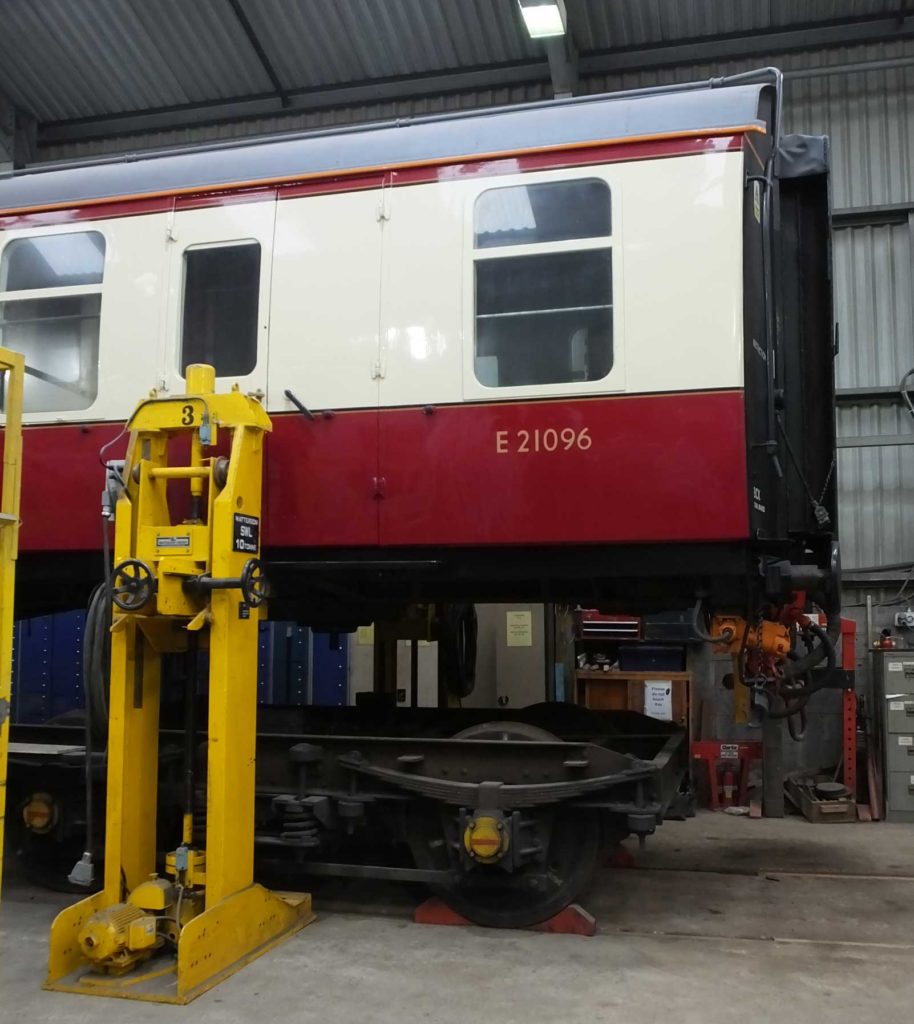
We plan for the SNG Operations Team to visit the coach in the new year to sheet it and work up a plan for the fitting out of the coach interior.
Now the platework at the front of the tender is complete, the various fittings that are attached to it have been collected together. The positions of the fire iron brackets was marked on the tender from a drawing produced before the tender was dismantled. The fire iron brackets have been tacked in place.
The canopy above the corridor has been finished by dressing the weld to make it a little less obvious that it is welded on, as originally the tender was all riveted.
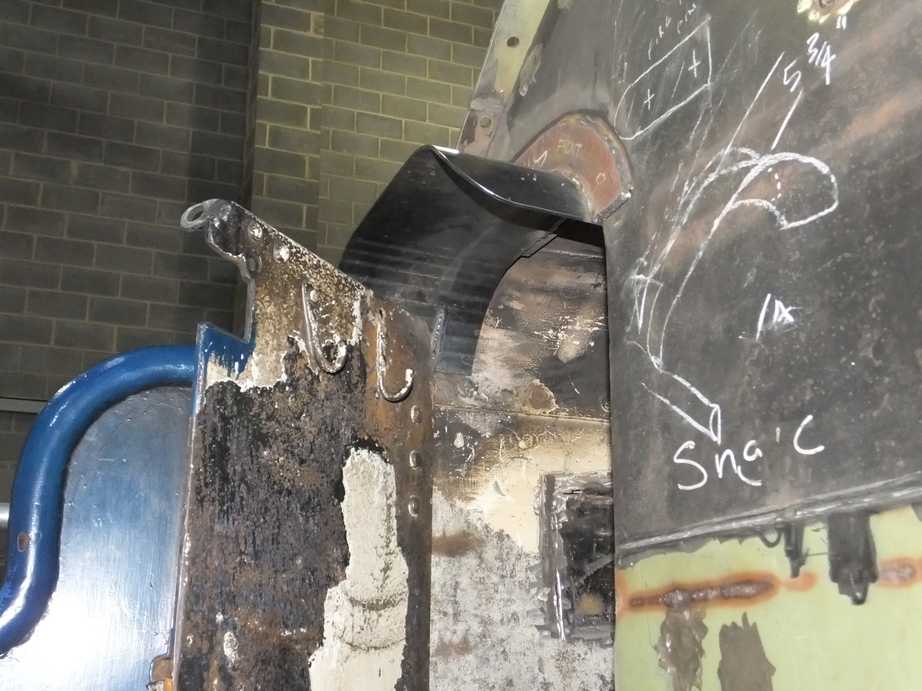
Also on the front of the tender, the water valve handles have been tried in position. The new floor plate will require alteration to accommodate the water handles and handbrake shaft which pass thorough the plate.
The tender rail guard irons have returned from the NYMR. One had been bent during a derailment at Grosmont MPD while in service and they had kindly offered to return it to its correct profile, with the undamaged one being used as a pattern. Both are now refitted; however, the right hand bolt ends are very close to a brake hanger, the left bolts are machined flush with their nuts to prevent contact. The right are now being similarly treated.
The tender to loco safety links have been heat treated and returned to York. They were polished all over to remove the heat treated finish and have now been painted and are ready for fitting.
The steam supply pipe to the air pump is in “hard” and has been lagged. Some further bracketing is being worked on.
On the tender top the installation of the pipework and air tanks continues. To increase the hours spent on piping, another volunteer has been added to the pipe-fitting team.
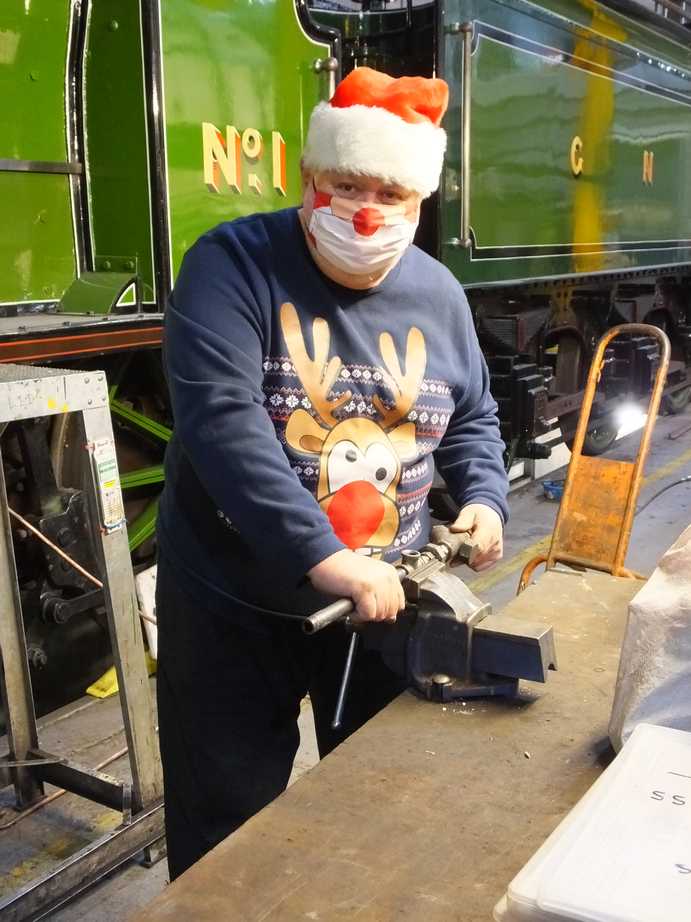
When the little air tank—one of three tanks on the tender—was fitted, it was found that the mounting brackets were skewed to the centre of the tank. The brackets have now been reworked and fit very well, picking up existing holes in the tender top. Two of the three tanks are now permanently fitted and piping installed. There are some pipe brackets to be welded in place which will allow the installation of the pipe between the two large tanks and the air system relief valve.
The area around the tanks has footplating that protects the pipe runs and prevents people from walking on the little tank. The footplating assemblies have now been trial fitted and painted. The securing of the largest section has been improved and required a little modification to fit with renewed tender platework.
Progress has been made with the boiler cladding. The right leading boiler panel has been previously weld repaired and was kind of OK, but would need further cosmetic and fitting work. However, the left side panels are in worse condition, perhaps due to being on the east side of the loco on the NYMR. So the left panels will require even more work.
Considering the amount of time that the right leading panel has consumed and how much more work is needed on the left panels, it was decided that a new approach was required. We decided to replace the entire right leading panel. The material was specified and a flat sheet and a rolled section were collected from Teesside by an engineering team volunteer. A couple of days’ work later, we put up a new panel with full material thickness and no patches. In fact it looks a lot better than its ex-service neighbour. So we are capable, and have a time and cost-effective method to proceed with recladding the boiler, where it needs it. The panels are awkward things to handle and we are so lucky to have the overhead crane.
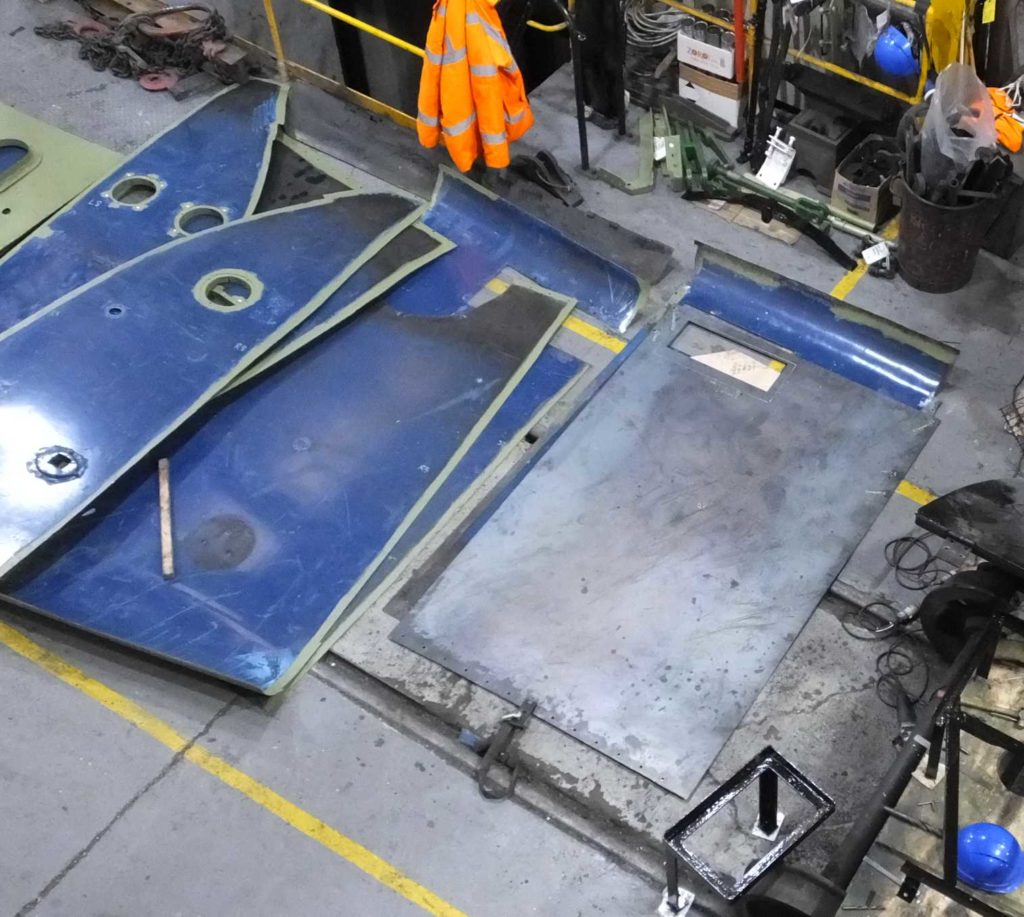
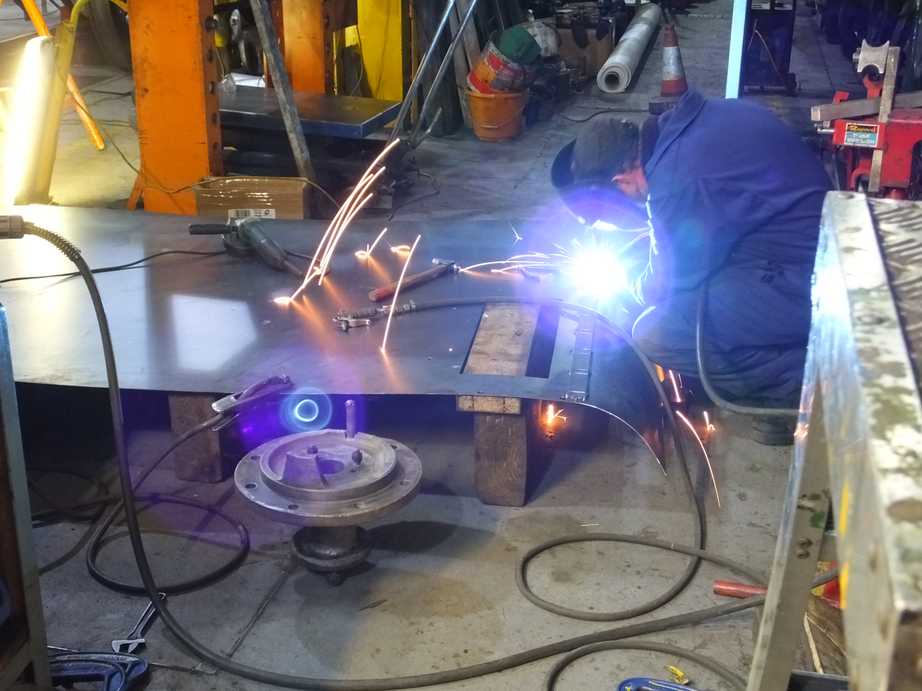
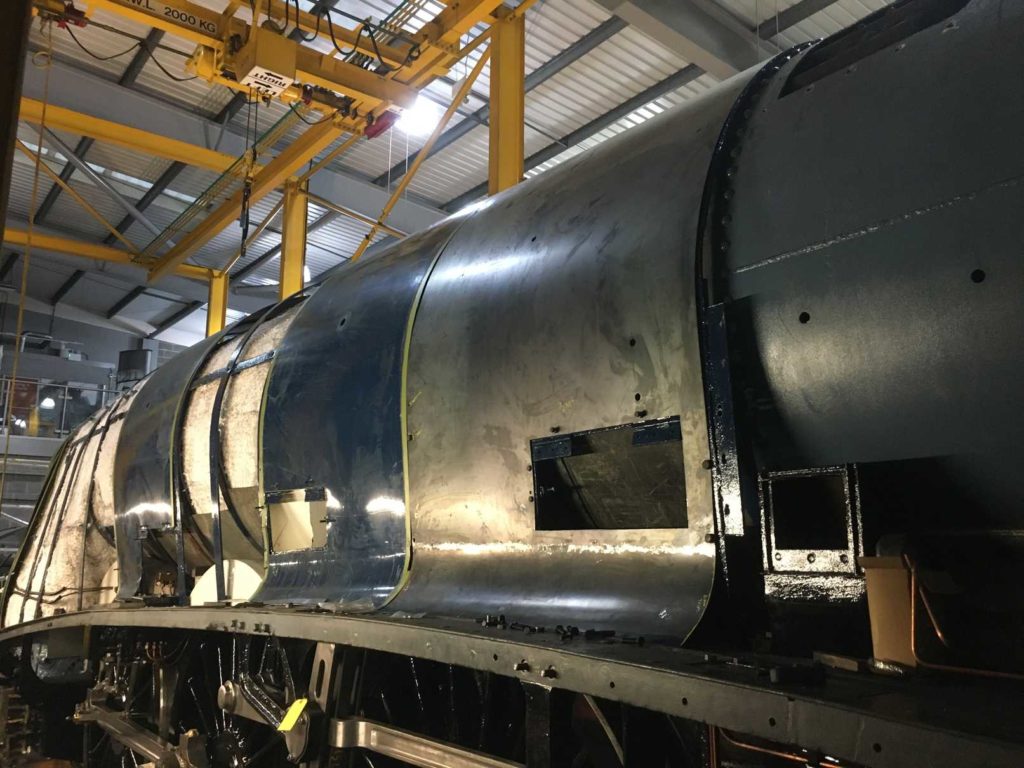
All the washout top hats have been riveted back on to their cladding sheets.
New dust guard ropes have been fitted to the bogie.
The cracked Cartazzi hornstay has now been repaired by contractors. They also rebuilt the ends and machined them at no extra cost over the initial quote for welding. The hornstay will require fitting.
When the Cartazzi brasses were checked before machining it was found that one did not to have enough white metal on its ends to be able to machine the overall length we require. The bearing has been returned to the white-metallers for rework.
The white-metaled leading valve crossheads have been collected from the white-metallers and all the necessary dimensions have been taken from the valves and crosshead slides to enable the crossheads to be machined.
The leading piston valve guides have now been machined true, with only one needing a final skim to centre it’s valve crosshead. This has removed all the wear from the valve guides and ensures the vertical running surfaces are in line with the valve spindles.
The little end keyways in the connecting rods are being dressed to accept the little end bush keys. The outside are done, with the middle underway.
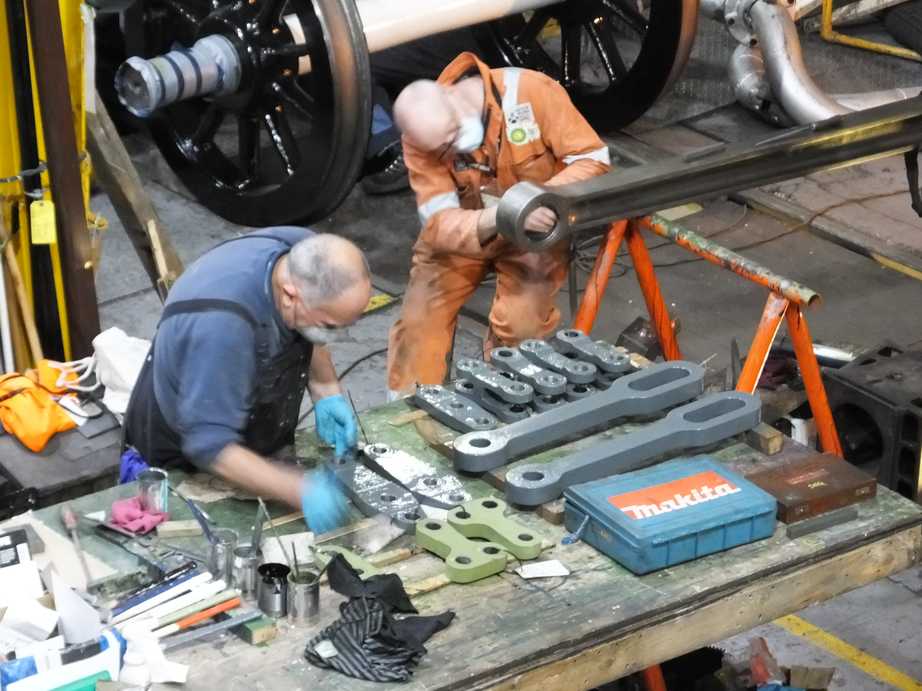
The little end bushes have been completed having been slotted for their oiling felts and their keyways machined. Only the keys are now required. The slots were put in at a commercial engineering works on a slotter, by an engineering team volunteer with the machine time generously donated.
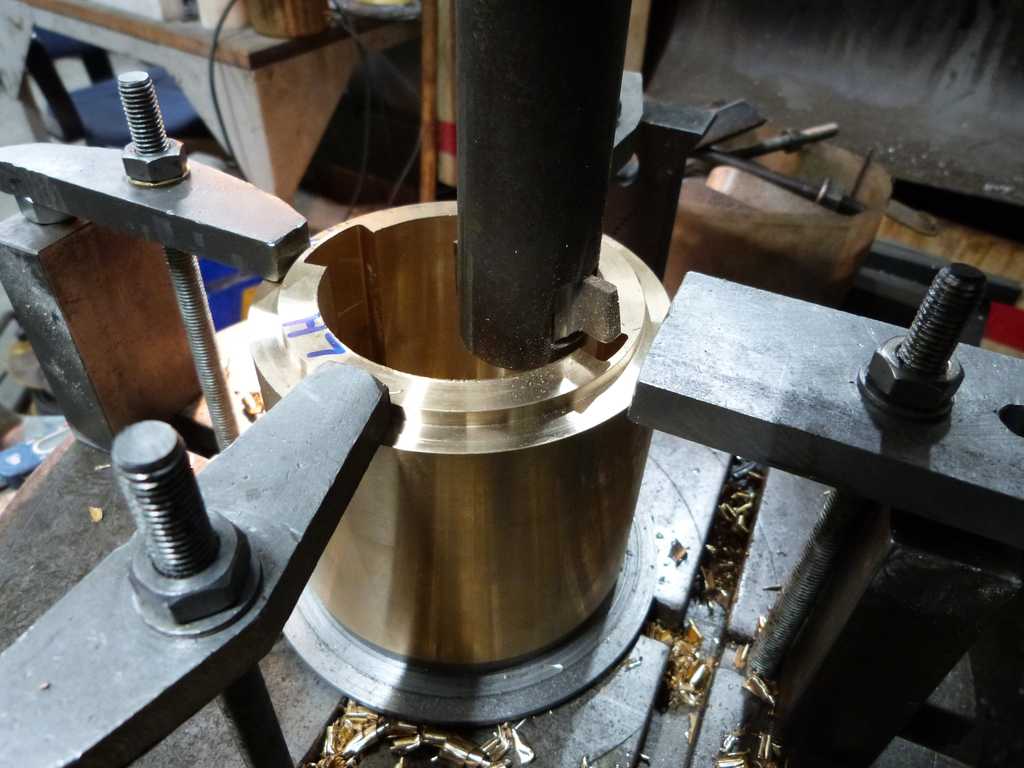
The middle big end bearing, which is in two halves, has had its mating surfaces skimmed and soft soldered together. The faces are skimmed to give the best circularity from the raw castings and soldered to hold them rigidly while the rest of the bearing is machined.
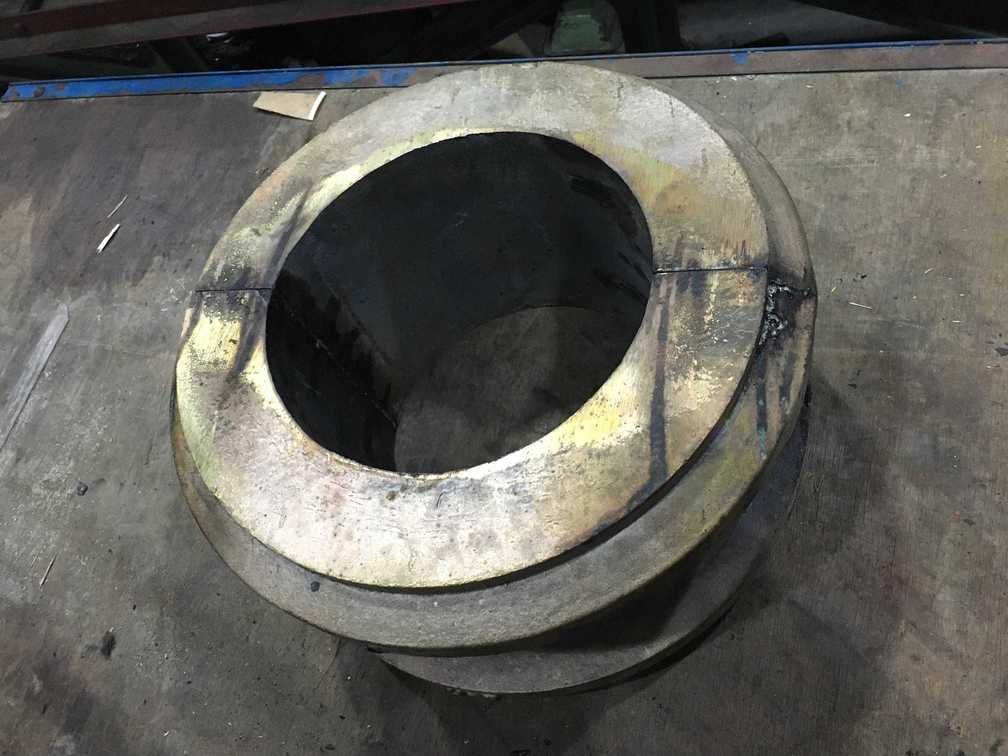
The four new loco brakeshaft bearings have now been machined and are being fitted. The housings in the loco are worn out of round so they are being honed and finished to provide a good fit for the bearings.
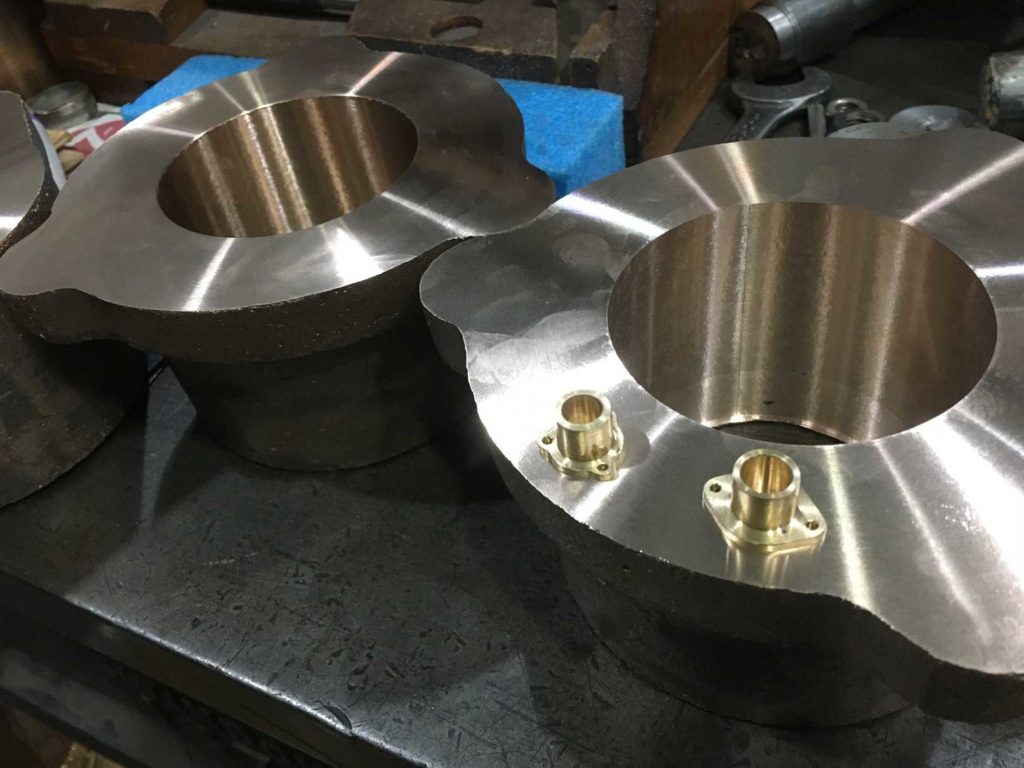
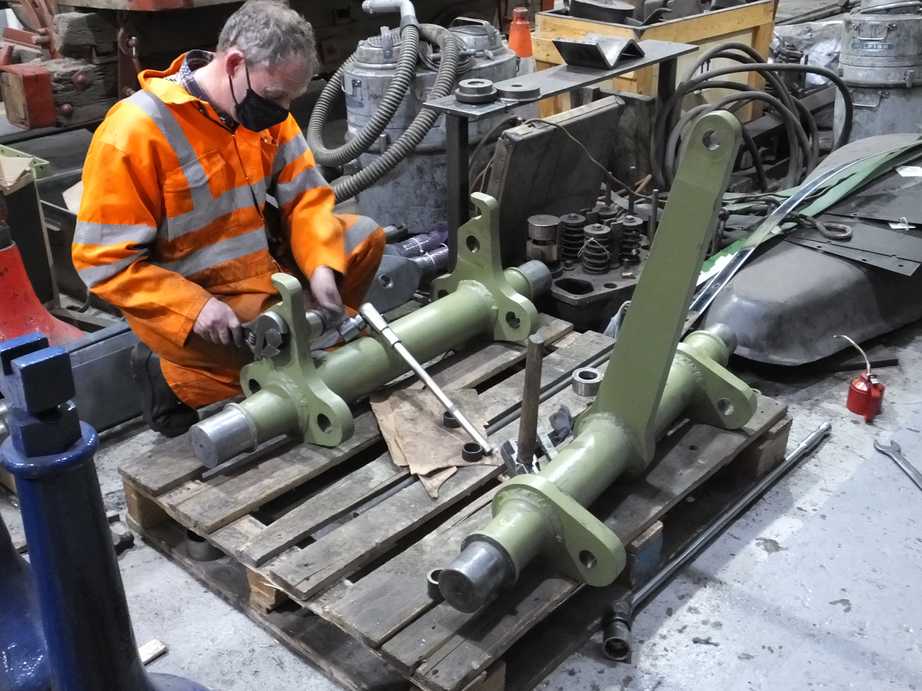
The brakeshafts are now ready for refitting after rebushing.
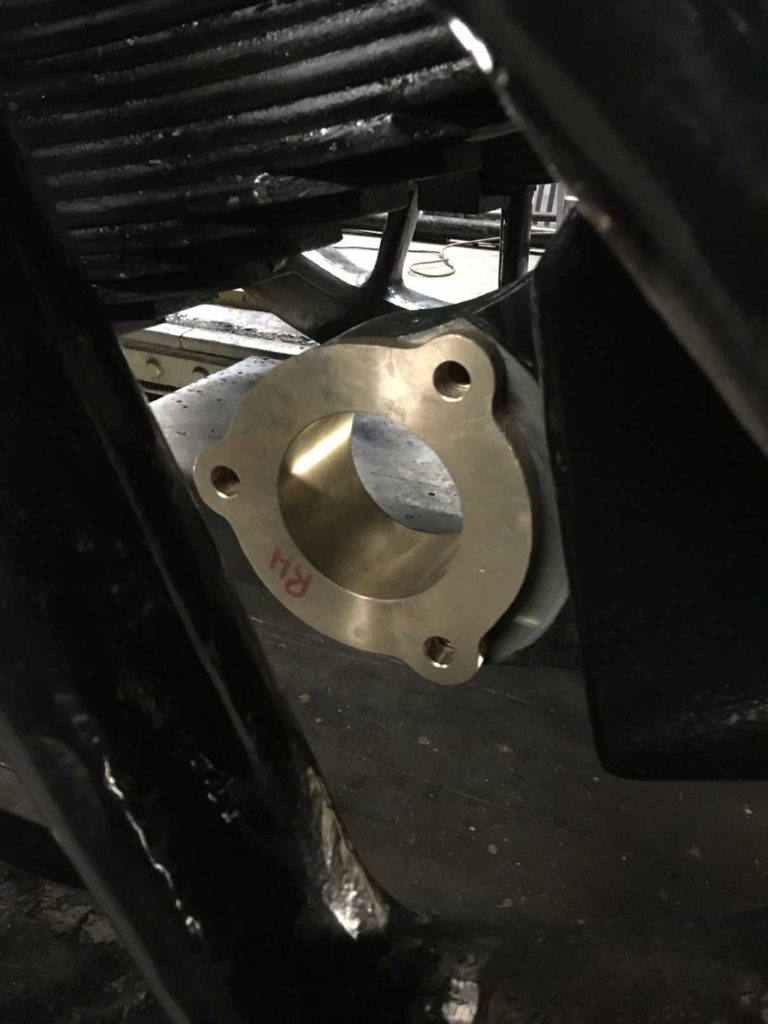
All the new pins for the loco brake gear have been machined and are now being cross drilled for split pins. All the rebushing of the brake pulls and links has been completed.
In the smokebox the right and last steel steam pipe has been trial fitted. This pipe required a couple of cuts to get it to fit on the new cast iron pipe. All three steel pipes have now been set up and require contractor welding. A number of contractors have been asked to quote for this work, which has also been discussed with our boiler insurer.
The cast iron steam pipes were then removed from the smokebox for drilling of the atomiser connections. The left is now completed.
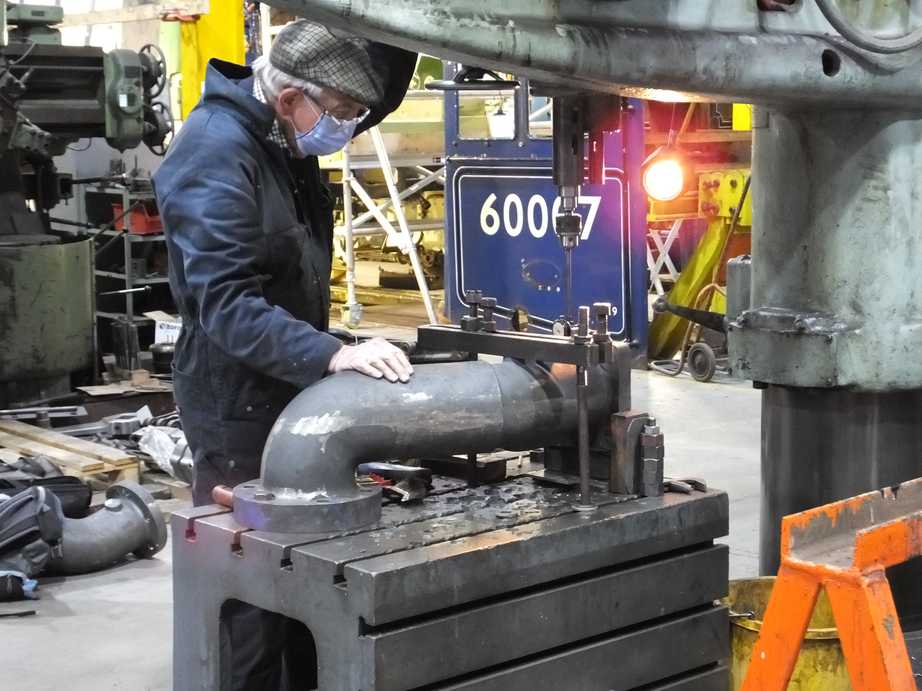
Work has started on the repair of the smokebox tapped holes for the superheater cover plates.
